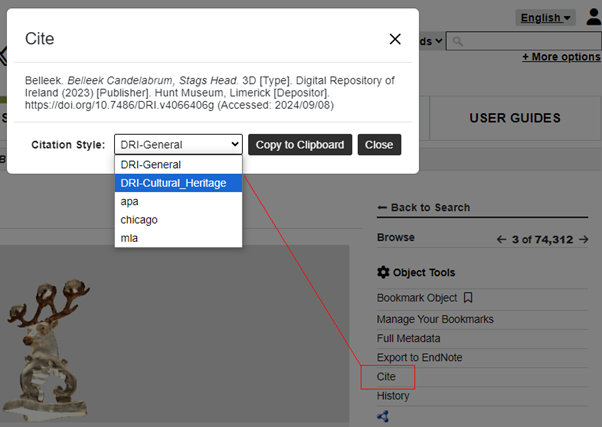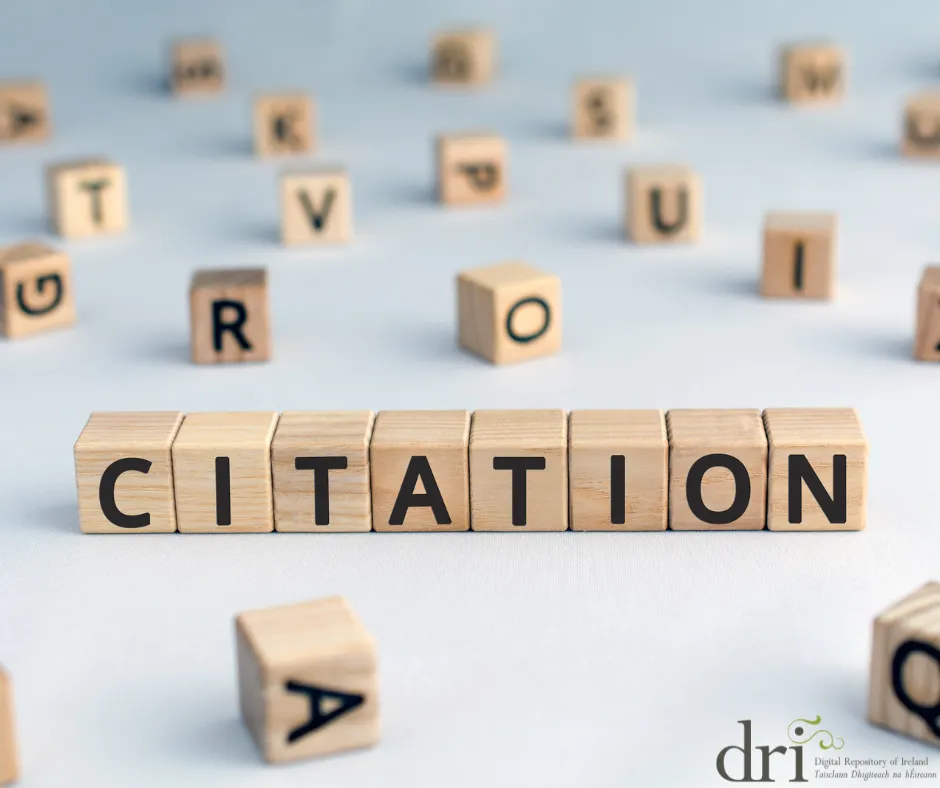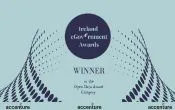In this blog post Lorraine Marrey, Training and Engagement Manager, interviews DRI’s Research Associate Joan Murphy about the new citation style for digital cultural heritage objects, which was developed following the Cultural Heritage Image Sharing Recommendations produced by the WorldFAIR Project’s Cultural Heritage Image Sharing Working Group. Learn more about DRI’s role in the WorldFAIR Project. DRI’s updated citation policy is now available in the Repository.
Lorraine: DRI has recently published a new version of its Citation Policy which has been updated to reflect the introduction of a new citation style, I believe you were heavily involved in the development of the new style – can you tell me a little bit about the background to the work you’ve been doing ?
Joan: I’d be happy to ! From June 2022 to May 2024, the Digital Repository of Ireland (DRI) was involved in an ambitious global initiative to improve the interoperability and reusability of digital research objects and data. The WorldFAIR Project presented an exciting opportunity to explore how different disciplines of practice interpret the FAIR principles for research data. DRI led the Cultural Heritage strand of WorldFAIR and we made the decision to use our own repository as a case study for the broader GLAM sector.
Lorraine: Why did you decide to use DRI as the case study ?
Joan: Taking our own repository as the use case allowed us to really interrogate how FAIR was being implemented in the Repository, which in turn gave us the opportunity to improve what we offered to members and the wider research community. As a research performing organisation we’re always endeavouring to keep abreast of best practice, but we’re also conscious that there can be a gap between theory and practice when it comes to the actual implementation of principles – FAIR or otherwise ! In May 2023, we published our key deliverable, (D13.2) Cultural Heritage Image Sharing Recommendations Report, and over the next year, we worked towards making incremental improvements to Repository functionality in alignment with those recommendations.
Lorraine: Why has DRI developed a new citation style for digital cultural heritage objects ?
Joan: The first recommendation made in our report, which leveraged the experience and wisdom of a wide range of international experts from the GLAM sector, was that a formal citation model for cultural heritage images should be adopted which recognises digital surrogates as research objects and includes references to revisions of either image data or metadata. Our previous report (D13.1) Cultural Heritage Mapping Report: Practices and policies supporting Cultural Heritage image sharing platforms had shown us that the citation of digital surrogates was poor to non-existent across the sector.
Lorraine: The Repository already had the functionality to provide a citation with a couple of different options didn’t it?
Joan: You’re correct there – DRI was already one of the few digital image sharing repositories to offer a range of citation styles to its users. We offered a local style based on CODATA-ICSTI recommendations for research data citation, in addition to MLA, APA, and Chicago citation standards, all conforming to the bibliographic model, which so many researchers are familiar with. Each of these options reproduces the same issue – the prioritisation of historical creator/author names for original artefacts makes it difficult for researchers to easily identify the correct credit holder for the digital records accessed.
Lorraine: So did we really need another citation style ?
Joan: Yes ! There is a growing need, particularly as we move towards the Collections as Data paradigm, to recognise digital surrogates as research objects in and of themselves, and to allow for the mutability of these records. The GLAM sector is constantly reevaluating how our collections are described and made accessible, and the rapid pace of change in technology allows us to improve the quality and type of digital surrogates available to our users. Reusability is a keep component of FAIR and Open Science and in combination with other actions being developed in response to the D13.2 recommendation on Licensing and Rights, we determined that creating a custom cultural heritage citation style for the repository would also assist the end user in the correct application of any licences.
Lorraine: How does the new citation differ from the existing ones on offer to users?
Joan: The new citation style has three primary features, the first is that the entity responsible for the digital surrogate is foregrounded in the citation. This promotes recognition of the stewarding organisation for the creation of both data resources (the digital objects) and interpretive metadata (description and documentation). Secondly, the date that the researcher has accessed the object is clearly indicated – should the record be updated in the future this will allow for a contextual framing and relationship to other image iterations, as it existed at the point in time that it was accessed. We’ve also added descriptive labels (e.g. Depositor, Type, Publisher) after each element in the citation to enhance human readability.
Lorraine: Can you give me a practical example of the new style?
Joan: Of course, I’ll use one of my favourite objects in the Repository, a 3D image of the Stag’s Head Candelabrum, produced by Belleek Pottery and held at The Hunt Museum in Limerick.
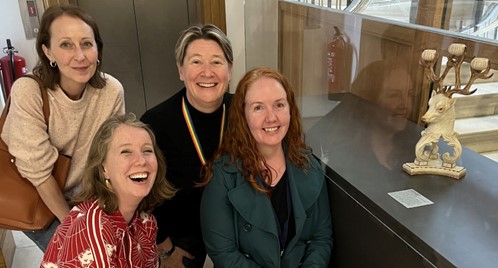
In the citation example taken from the Repository (Fig 1, below), the 3D rendering of the 19th century candelabrum is clearly credited to the Hunt Museum in Limerick as the creator of the digital file and its associated metadata. The end user can also clearly see that the subject of the data (i.e. the original artefact) originates in the 19th century, that the data itself is published by the Digital Repository of Ireland, and that it is located at a stable DOI.
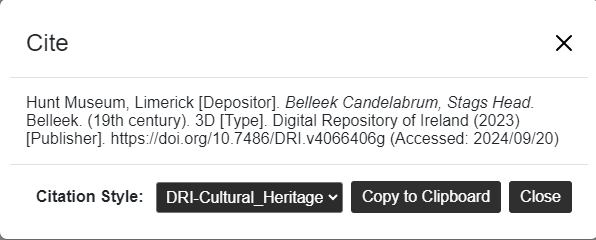
In comparison (Fig 2, below), the same object cited using the DRI General Citation Style (or indeed MLA, APA or Chicago) suggests that the 19th century historical creator (or source, in this case) is responsible for a digital object published in the repository in 2023.
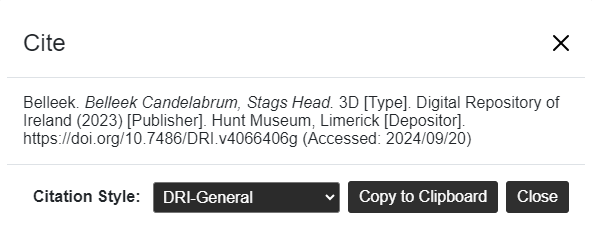
Lorraine: So how can I cite using the new style ?
Joan: The new style is already available, alongside existing citation styles, on every Collection and Object page with the Repository, simply click on the Cite option from the Object Tools and use the drop down menu to choose your citation style. Simple as that !
